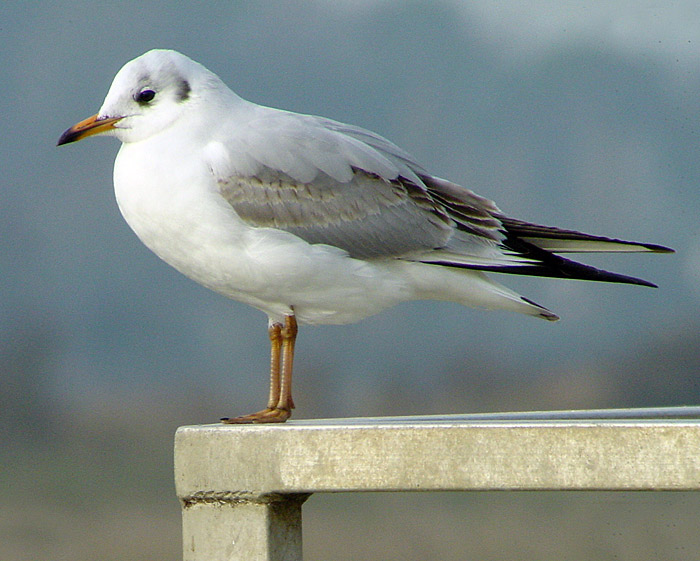 Black-headed Gull- Kokmeeuw (L. ridibundus)
Black-headed Gull- Kokmeeuw (L. ridibundus)
(last update:
Photo 8060: Black-headed Gull L. ridibundus 2cy, February 06 2003, Le Portel / Boulogne-sur-Mer, France.The partial autumn moult (post-juvenile moult into so-called "first winter") started right from the moment the nest was abandoned last summer and ended last September. In this bird, the partial moult included the head and under-parts, leaving wing-coverts and tertials juvenile. The buff-brown juvenile colour on the head and in the lower hind-neck has been replaced: the head is most white now with a typical black spot on the rear ear-coverts and a dark patch around the eye, in this bird hardly extending over the crown. The mantle and scapulars have been replaced for second generation feathers which are all grey. Normally, active moult is suspended during the wintering months, from October to January, with the next moult taking place in early spring (from February to April: moult into so-called "first summer" plumage). However, as can be seen in several images on this website, some birds continue moult (particularly in the greater coverts) in these months, although probably on a low pace. In this way, the partial autumn moult gradually overlaps with the next partial moult in spring, which in turn may continue into the complete moult in summer.
|
